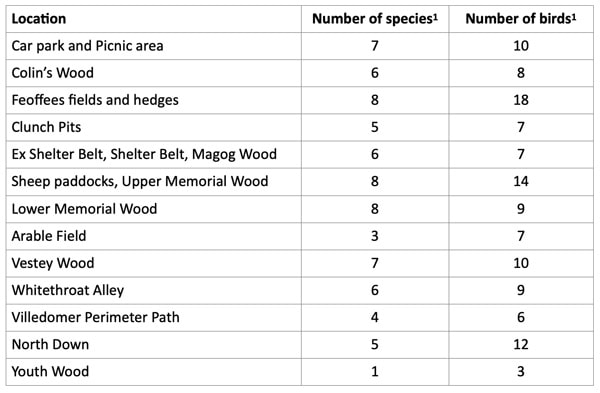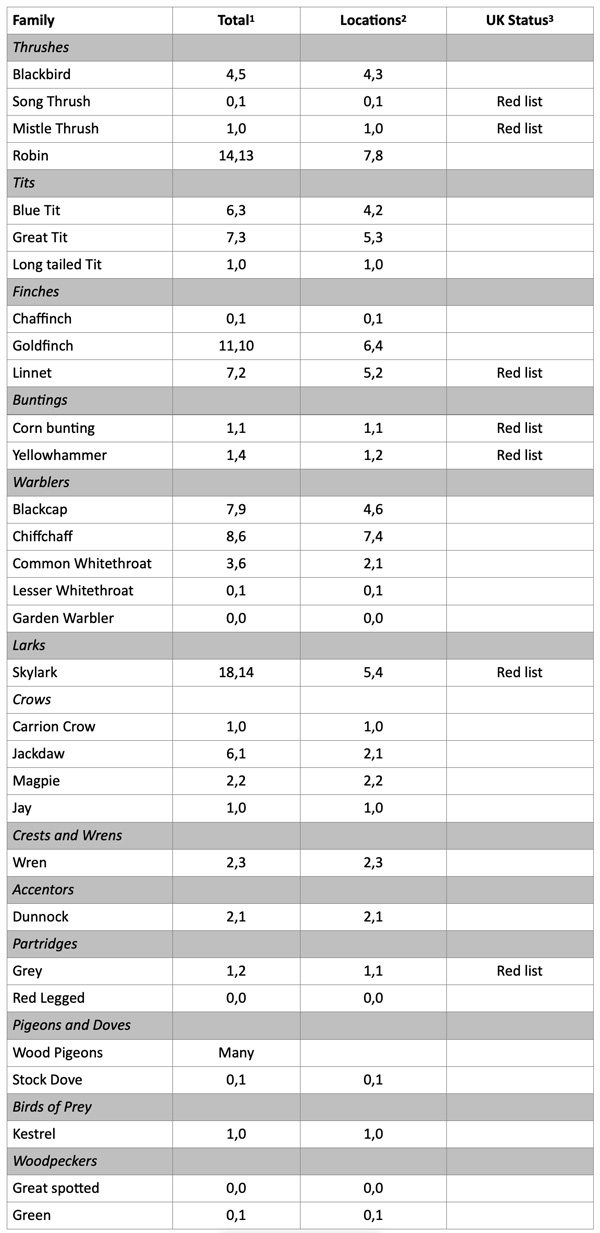2022 Report of a long-term Survey of breeding birds on Magog Down Stapleford
Mike Foley and Bryan Davies, Cambridgeshire Bird Club
Summary
This is the eleventh annual report of this long-term survey using the revised field methods described in Appendix 1 of the 2012 Report. The purpose of the survey is to identify permanent gains or losses in the species breeding on the Down. Probably 29 species bred in 2022, a similar number to the long-term average of 30. Only one species the Willow Warbler appears to have permanently stopped breeding on the Down, although the very small numbers of several other species – Corn Bunting, Yellowhammer, Mistle Thrush and the once common Chaffinch indicate that we may lose more. The Wren has in past years been recorded in several locations but in 2022 smaller numbers were heard on both visits. The wren is easily identified by its loud song so the drop in numbers recorded is likely to be real but the reasons are unknown.
The nationally Red listed Skylarks continue to prosper on the Down’s grasslands. Other species recorded in substantial numbers are Blackcap, Chiffchaff, Common Whitethroat, Robin, Goldfinch, Great Tit and Linnet. The Linnet is Red listed but overwinters on the Down in large numbers feeding on the bird seed strip. Many of these birds leave to breed elsewhere.
Only one bird of prey, the Kestrel, is breeding on the Down – probably in the old trees of the Shelter Belt or Chalk Pits. Buzzards and Red Kites are frequently seen on the Down but probably breed elsewhere. The occasional Sparrow Hawk is also seen but again there is no evidence of it breeding on the Down.
One of the major limitations to bird numbers on agricultural land in England is probably lack of insects for feeding chicks, but we know from surveys that there are a large range of insects living on the Down. This suggests that other factors are more important. Predation by squirrels, magpies, jays and badgers are likely to be the most important limitations, although unintentional interference by visitors and their dogs may also be a factor.
Field Visits
Two recording visits were made in 2022 (21/04 and 09/05)
Results
Table 1. Number of species and birds recorded at each of 13 locations on the two visits following the same transect as in previous years.

1 Excluding Wood Pigeons
Table 2. Species probably breeding on Magog Down in 2022

1 Number of birds recorded on the first and second surveys.
2 Number of locations where species recorded on first and second survey
3 Species of greatest conservation concern
